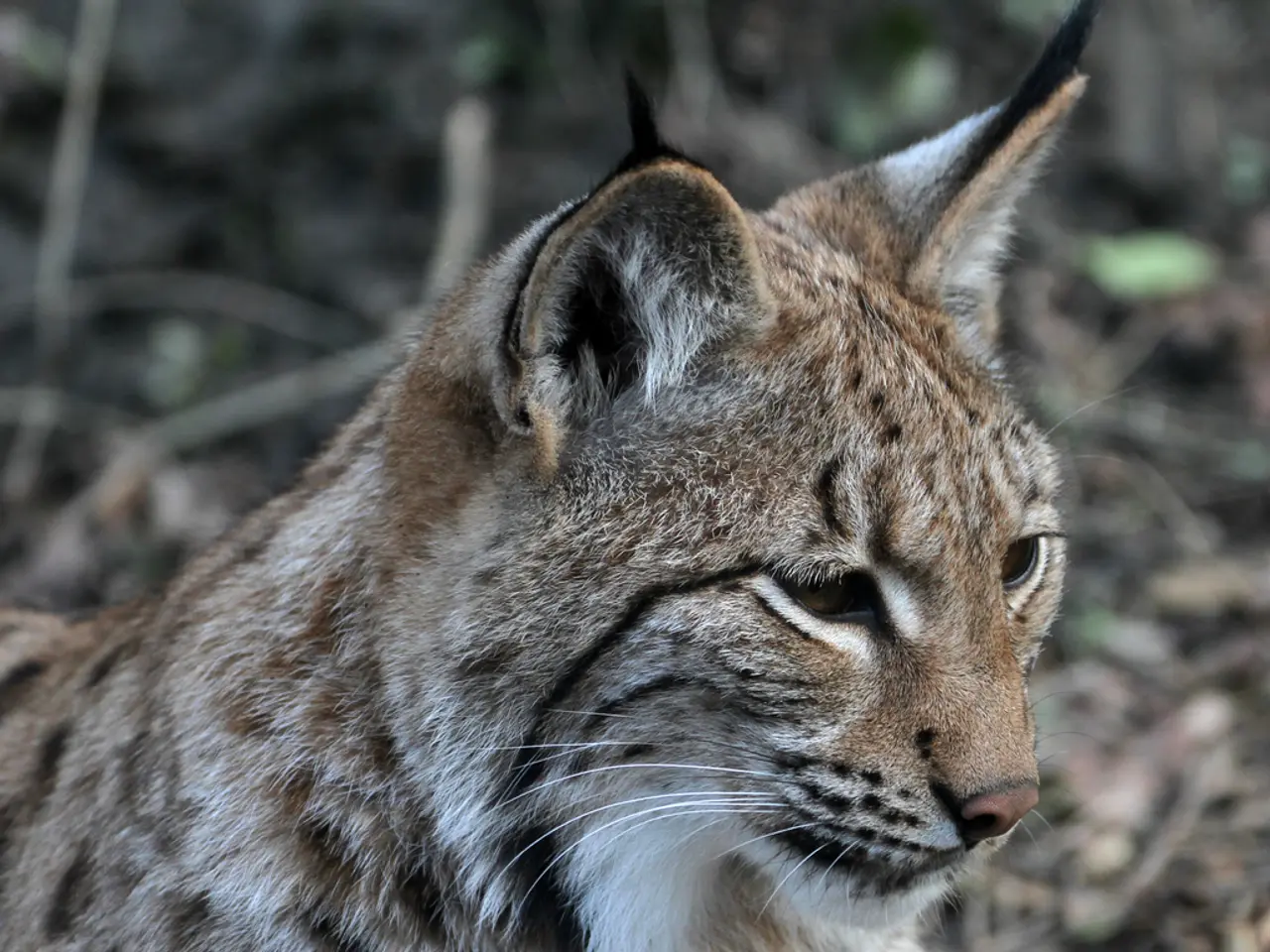Big Cats Clash: The pounds-paw battle between Mountain Lions and Bobcats
In the vast landscapes of the Americas, two wild cats rule the terrain - the mountain lion and the bobcat. Though both are members of the Felidae family, they exhibit distinct differences in their physical characteristics, behaviour, habitat, and coexistence with humans.
Physically, mountain lions are larger and more powerful than bobcats. They can weigh between 75 to 150 pounds, with a longer tail, typically more than half the length of their body, and are primarily tan with black tips on their tail and ears. Bobcats, on the other hand, are smaller and lighter, typically weighing between 15 and 45 pounds. They have a light spotted coat with smaller ear and cheek tufts compared to lynx, and their tail is short and stubby with stripes.
Mountain lions are solitary animals with large territories. They are primarily nocturnal and ambush predators, feeding on larger prey like deer. Bobcats, while also solitary, are more adaptable to various habitats and are active both day and night. They hunt smaller prey like rabbits, hares, and birds, and are known for their agility and stealth.
Both cats prefer a variety of habitats, from forests to deserts. Mountain lions prefer areas with dense cover and suitable prey, while bobcats are highly adaptable and can be found in a wide range of environments.
When it comes to coexistence with humans, both species generally avoid them. However, mountain lions may come into conflict if their territory overlaps with human settlements, while bobcats may be more adaptable to living near human settlements due to their smaller size and more flexible diet.
Encounters with human beings by mountain lions, though extremely rare, can be serious. Attacks on humans by both mountain lions and bobcats are rare, but mountain lions pose more risk due to their large size and ability to kill large prey. Bobcats, on the other hand, tend to flee rather than fight when confronted by humans.
In Washington State and beyond, efforts are being made to protect both species and reduce the risk to pets, livestock, and people through education and smart wildlife practices. Both mountain lions and bobcats are ambush predators, relying on stealth and surprise. Tracks, paws, and kill sites help wildlife experts differentiate between the two cats.
In conclusion, mountain lions are larger, more powerful predators with a preference for larger prey, while bobcats are smaller, more flexible hunters. Both avoid humans but can pose different risks depending on their habitat and behavior. Understanding these differences can help us coexist with these magnificent creatures while ensuring the safety of our communities.
In the realm of habitat preferences, both mountain lions and bobcats find a variety of environments suitable, be it forests or deserts. However, mountain lions tend to favor areas with dense cover and suitable prey, whereas the smaller and more adaptable bobcats can inhabit diverse habitats.
The coexistence of these wild cats with humans also demonstrates differences. Although both species typically avoid human contact, mountain lions may present a greater risk in encounters due to their larger size and tendency to attack if their territory overlaps with human settlements, while bobcats tend to flee when confronted by humans.







